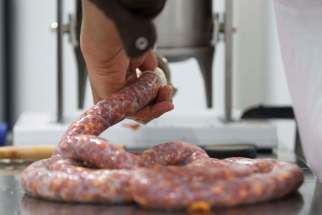Life is a grind Sausage-making keeps Filipino heritage alive
Read this article for free:
or
Already have an account? Log in here »
To continue reading, please subscribe:
Monthly Digital Subscription
$0 for the first 4 weeks*
- Enjoy unlimited reading on winnipegfreepress.com
- Read the E-Edition, our digital replica newspaper
- Access News Break, our award-winning app
- Play interactive puzzles
*No charge for 4 weeks then price increases to the regular rate of $19.00 plus GST every four weeks. Offer available to new and qualified returning subscribers only. Cancel any time.
Monthly Digital Subscription
$4.75/week*
- Enjoy unlimited reading on winnipegfreepress.com
- Read the E-Edition, our digital replica newspaper
- Access News Break, our award-winning app
- Play interactive puzzles
*Billed as $19 plus GST every four weeks. Cancel any time.
To continue reading, please subscribe:
Add Free Press access to your Brandon Sun subscription for only an additional
$1 for the first 4 weeks*
*Your next subscription payment will increase by $1.00 and you will be charged $16.99 plus GST for four weeks. After four weeks, your payment will increase to $23.99 plus GST every four weeks.
Read unlimited articles for free today:
or
Already have an account? Log in here »
Hey there, time traveller!
This article was published 05/02/2019 (2502 days ago), so information in it may no longer be current.
People who complain about their headphone cords getting tangled have never attempted to work with a bundle of entwined natural hog casings.
On a recent -39 C day, Lord Sale is in the chilly facility he rents at DeMartines Farm, about five kilometres outside Beausejour, working patiently to pull out and separate long strands of slippery pig intestine in order to wash off the salt and prepare them for stuffing.
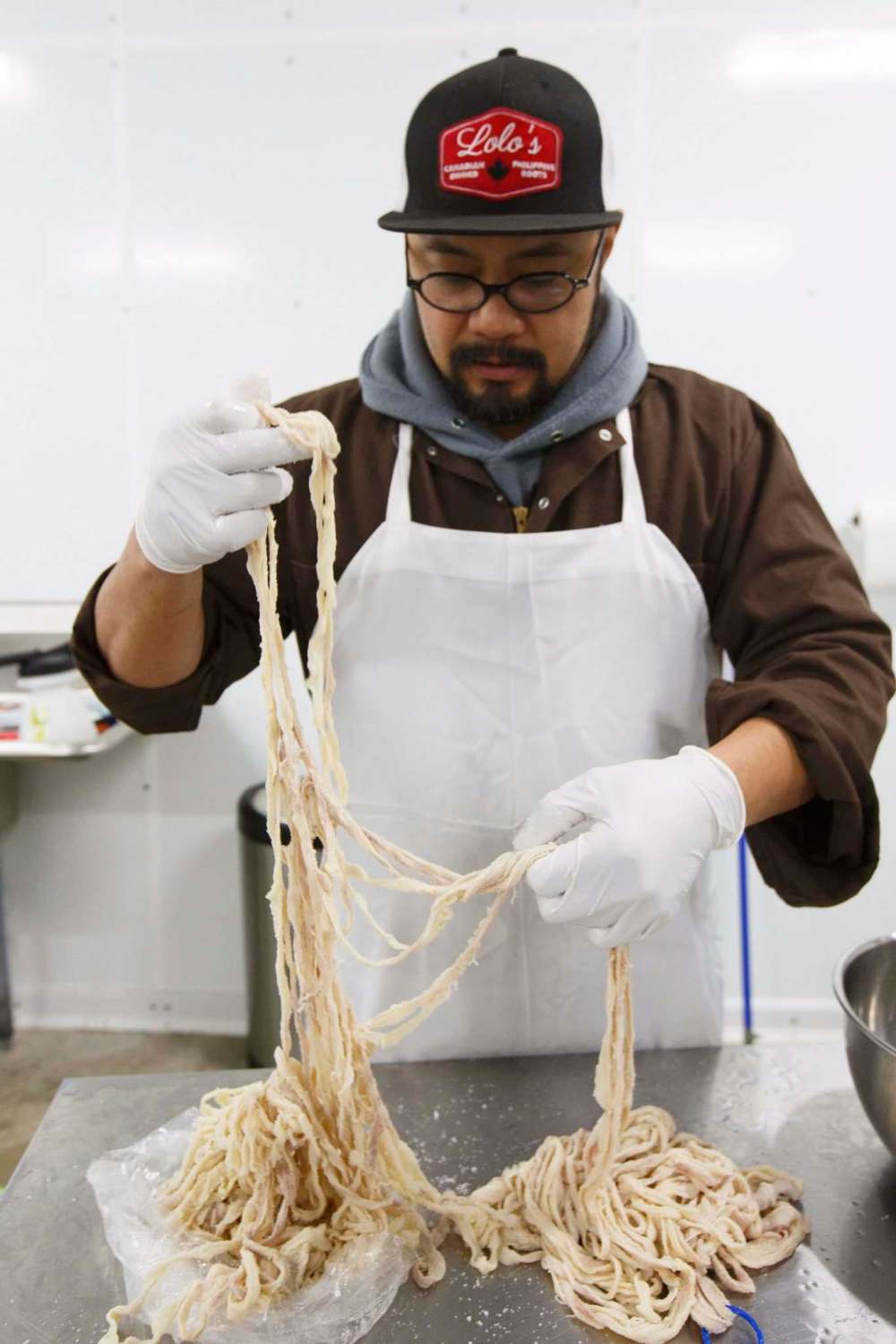
Sale, 45, is the proprietor of Lolo’s Premium Food Co., a Manitoba company specializing in Filipino-style meat products. The hog casings are for chavacano, a spicy grilling sausage.
“Chavacano is a Creole Spanish-Filipino language; my great-great-grandfather was half-Filipino, half-Spanish,” Sale explains. “My dad gave me his book, his published memoirs, and it’s written so on one side it’s in Chavacano and on the other side is Tagalog — even my mom can’t decipher it. Even the Filipino side, she can’t understand it. He wrote it in the late 1800s, so I guess the language was more traditional back then.
“Chavacano, you can still find people who speak it now, but it’s a dying culture… I called it (the sausage) chavacano because it means something to me, and it’s my blend of Spanish and Filipino.”
As Sale carefully straightens out a rinsed casing, he admits it’s the worst part of the job.
“There’s another way to buy this — they’re placed on pliable plastic tubes — but you can’t rinse them through,” he says as he bunches the casing up onto the nozzle of a hand-cranked vertical stuffer. “I prefer to do this than to trust someone else’s process.”
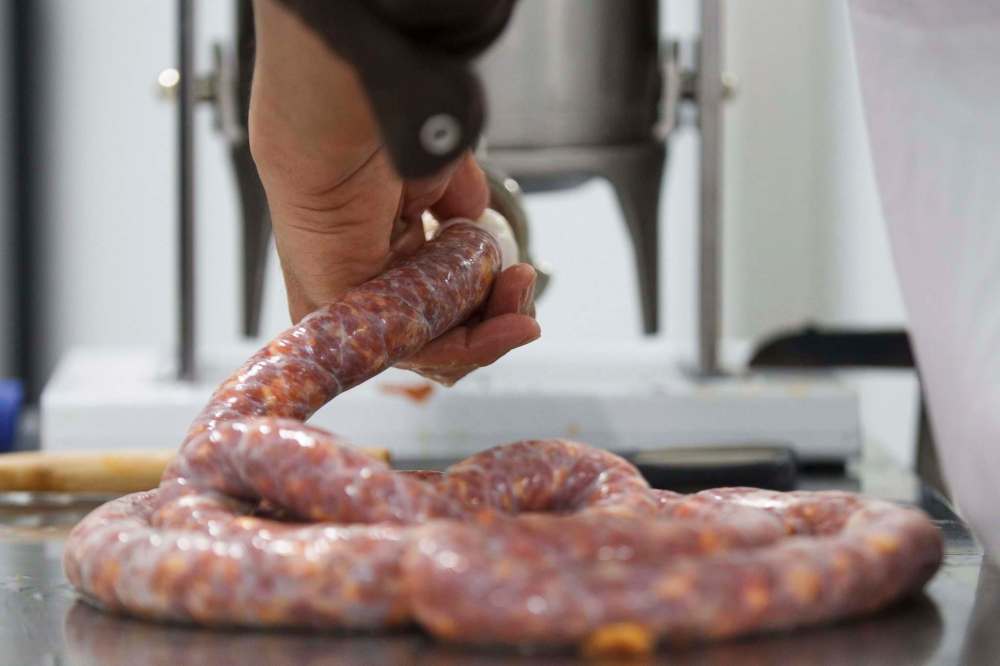
Once the casing is in place, he slowly turns the crank, filling the long tube with ground pork mixed with a blend of spices. When the coil of casing is full — a mesmerizing process to watch — he measures off six-inch lengths, gracefully twisting the thick tube of meat so it forms individual sausages in an intricate series of loops that almost looks like a meat mobile.
Not bad for a guy who learned by watching YouTube videos and other butchers.
For his longganisa — a sweet garlic sausage from the Philippines — Sale uses smaller and easier-to-handle collagen casings, which give the sausage a non-traditional shape. While Filipino longganisa is usually short and stubby, Lolo’s longganisa is more tubular, like a typical breakfast sausage.

Lolo’s vision started with a hotdog cart, which Sale launched after being laid off in 2017 from his job as junior foreman with Subterranean Drilling, a Manitoba piling contractor that has done foundation work for such major structures as Bell MTS Place.
To stand out from the crowd of people pushing portable pork products, he asked a butcher to make a smokie of his own invention, a bigger smoked version of the longganisa.
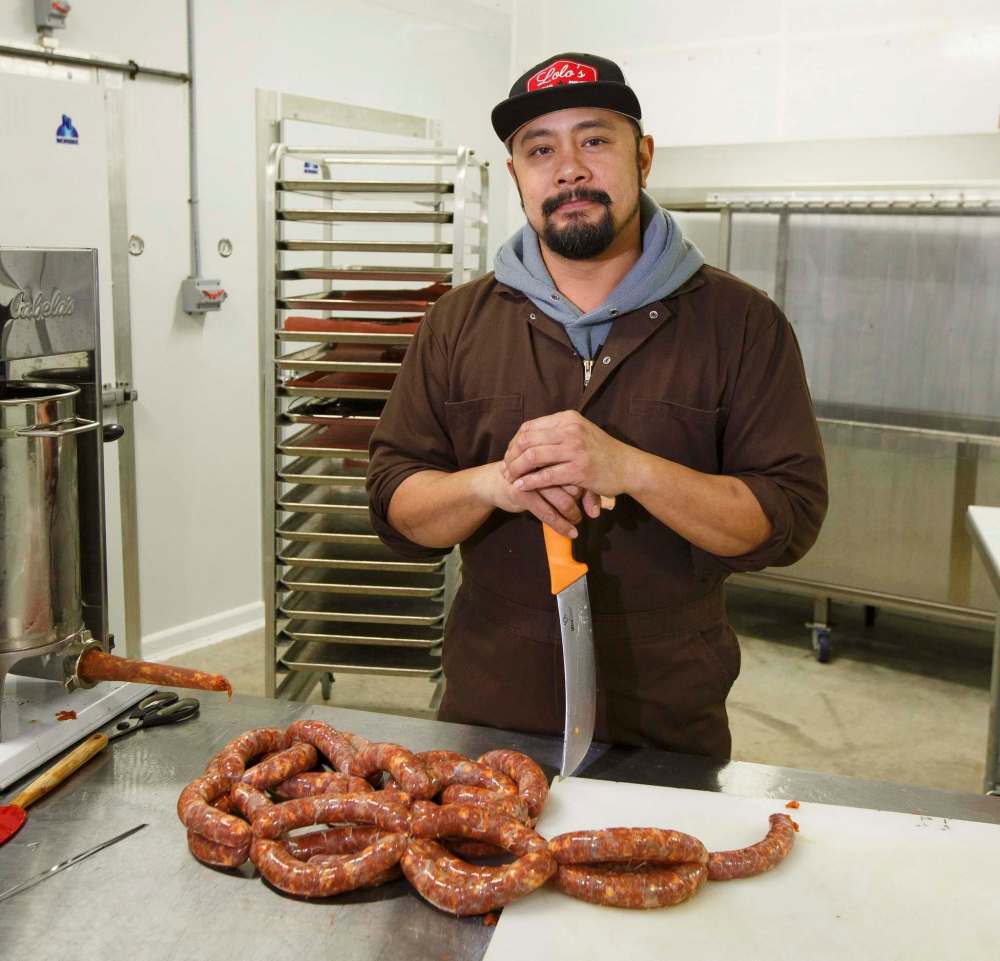
“I wanted to do something different and it went well, so I figured, why don’t I do it myself and sell it in stores?” he says. “So I went on a journey. While I was getting them made, I paid attention, because I’d never done it on a commercial level — I did it at home a few times — and just took it from there.
“I didn’t really want to go back to heavy construction, so I just went for it,” says the soft-spoken father of four, who graduated from Daniel McIntyre Collegiate and majored in environmental science at the University of Manitoba.

Lolo’s offers longganisa, chavacano, longganisa smokies and tocino (often called Filipino bacon, it’s thin strips of pork shoulder, dipped in a sweet, savoury marinade). The product is available at select butcher shops and supermarkets, as well as on the menus of several local restaurants.
“My grandfather on my dad’s side had a hog farm in the Philippines,” says Sale, whose parents are both Filipino-born. “He wasn’t a sausage maker, but the recipes were there. I tweaked them quite a bit, though, because I want to market it to a wider group, not just Filipinos. If you go to an Asian market there’s 19 (brands) of this stuff, lots of it. I wanted to take it to a non-Asian market, like Miller’s (Meats) or Save-On. So I tweaked to the point where I liked it and I thought other people would like it.
“I want to present it to restaurateurs as something that doesn’t have to be served in a traditional way, that’s more usable on any menu. It’s not going to be like roast beef, of course, but it’s more versatile,” he says, adding that he has a presentation at the Canadian Culinary Federation meeting at St. Charles Country Club on Feb. 13 to introduce a wider audience of chefs to his product.

He rents the commercial kitchen facility, which he found through Manitoba Agriculture’s business development department, from the owners of the neighbouring farm, a family who emigrated from the Netherlands in the 1980s. He makes the trip to Beausejour once or twice a month, depending on orders and demand.
“I don’t like making the drive every time, but it’s not a typical kitchen. This place doesn’t have any cooking equipment, and I don’t need it. It has the walk-in coolers and the family’s great to work with,” he says, adding they use the space themselves to make frikandel, a skinless deep-fried Dutch sausage they sell under the brand name SnackMart.
Sale does everything himself other than the smokies, which Sale has a butcher make for him until he can set up a smokehouse. He brings in boneless pork shoulder from Litke Wholesale Meats and grinds it on-site, blending it with his own recipe of herbs and spices. He doesn’t use fillers or soy sauce, and the sausage gets its distinctive red hue from a paprika extract, rather than food colouring.

“If you’ve seen it in the grocery store, they use an artificial colour,” he says. “Traditionally it was paprika itself that was used, but testing it, to get the colour with natural paprika, it was imparting a lot of flavour and heat.”
The tocino is particularly time-consuming, as each piece must be dipped individually in the marinade by hand.
“I just wasn’t satisfied with the consistency,” Sale says of his initial foray into having other butchers make the product. “And there’s a cost to it, too. The only way to make it so that I’m happy with it, that it’s packaged the way I want it to be packaged, is to make it myself.”

His hands-on approach extends to marketing and sales. He designed the Lolo’s logo, and does the sales calls and deliveries himself; his kids often help out with the manufacturing process.
“Lolo” is the Tagalog word for grandfather, and it’s also Sale’s nickname, but it’s more than just a cute moniker. Not only does it signal his heritage, but it references the man who inspired him.
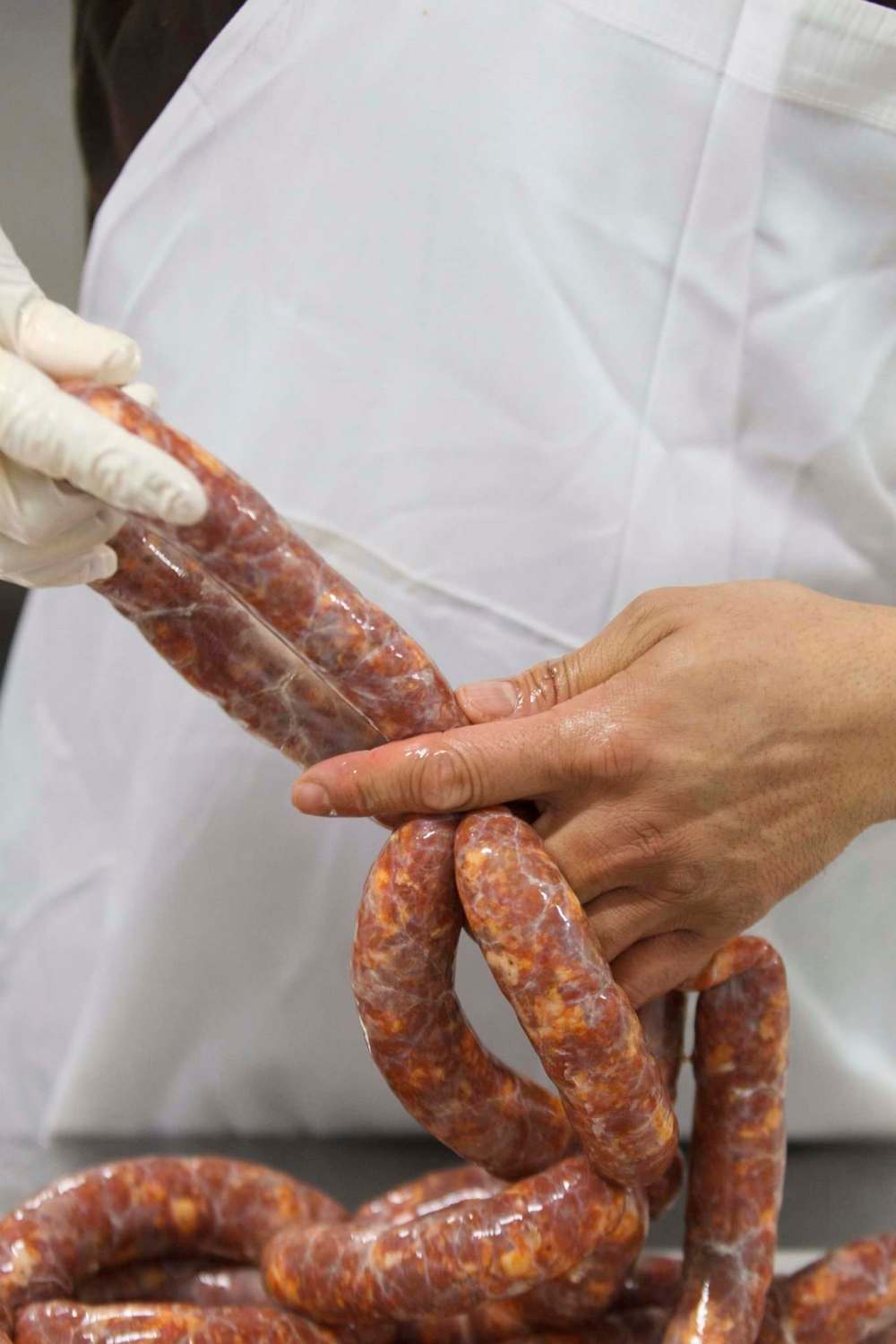
“I didn’t meet my grandfather, my mom’s dad — at least to remember him — until I was 11,” he says. “We went back to the Philippines and he was in his 70s and he was out in the fields farming. I found that lolo to be inspirational to me; I idolized him. He was kind — everybody in my family was really rough. I was there for a few months and he taught me a lot.
“I named it Lolo’s just because I only got anywhere in life because I used him as an example; he was my inspiration.”
jill.wilson@freepress.mb.ca
Twitter: @dedaumier
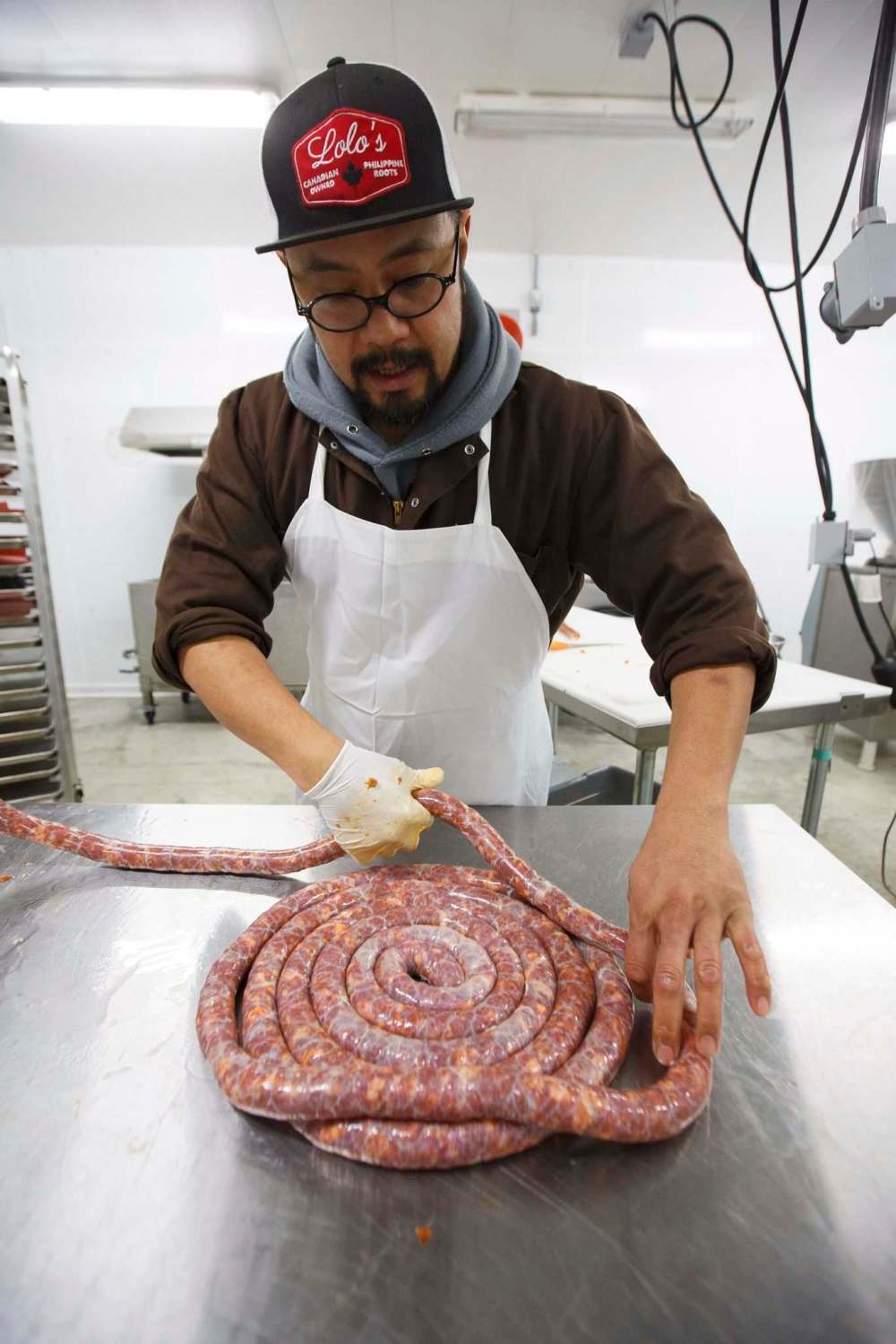
Where to find Lolo’s Premium Food products
Miller’s Meats locations
Beausejour Co-op Food Store
IGA, 1650 Main St.
Local Meats & Frozen Treats, 593 St. Anne’s Rd.
Degrees restaurant, University of Manitoba
The Good Eats at the Good Will Social Club, 625 Portage Ave.
Ivan’s Kitchen, 728 Logan Ave.
Dixie Lounge at McPhillips Station Casino

Jill Wilson writes about culture and the culinary arts for the Arts & Life section.
Our newsroom depends on a growing audience of readers to power our journalism. If you are not a paid reader, please consider becoming a subscriber.
Our newsroom depends on its audience of readers to power our journalism. Thank you for your support.





